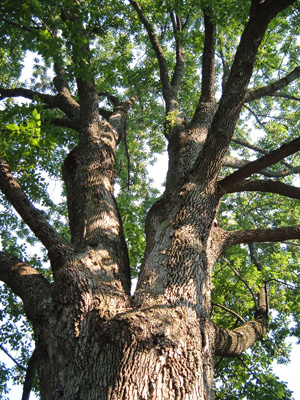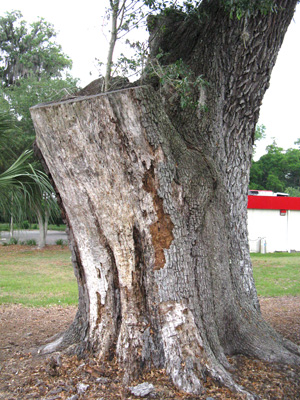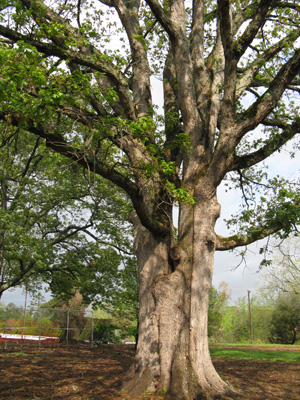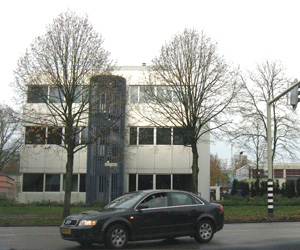Home > Pruning shade trees > Mature trees > Cabling and bracing > Mature tree scenarios
Mature tree scenarios
Close spacing is well suited for urban plantings. Nice job Saskatoon! Reduce stems that are competing with the leader, especially on trees at the end of rows such as the one pictured on extreme right. Also consider reducing large limbs growing away from the rest of the canopy. |
 |
Two lindens on the left have many small codominant stems growing upright. Consider reducing and removing some so the remaining ones can grow unincumbered by the others.
|
|
Two codominant stems growing nearly parallel to one another with an inclusion in the union. The pronounced swelling in the union toward the viewer and the "V" shaped union are signs of the inclusion. Consider cabling the two stems together. Pruning may not be needed because most of the mass is upright.
|
 |
Mature tree with a 7' diameter trunk. Left stem was removed several years ago resulting in trunk and root death on the entire left side of the tree. Because there is an open field with no targets to the right (off screen), there is no need for treatment or removal. If this tree was next to a house or other high valued target, the tree should be removed immediately.
|
 |
Very old oak with two main stems with an inclusion in the union. Consider cabling the two stems together. Pruning may not be needed because most of the mass is upright.
|
 |
| Many large pruning cuts were made in the last two years on the middle and upper part of the trunk and on the main primary branches. This left the tree with terrible form, i.e. all foliage is now at the ends of the branches. Let the tree recover from this misapplied pruning, then return to reduce or thin the ends of the largest branches (e.g. the left one growing toward the building). Be sure to retain the sprouts that emerge from the canopy interior because these will help the tree recover from this over-pruning. |  |
This mature small-maturing tree (Cornus) needs no treatment. Close inspection shows that numerous small diameter branches have been removed over the years from the interior portions of branches. As sprouts emerge, retain these to help resist wood death on main branches. |
|



